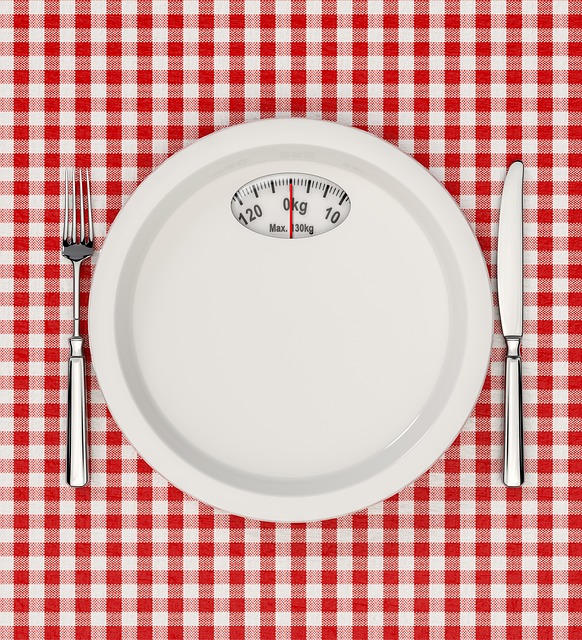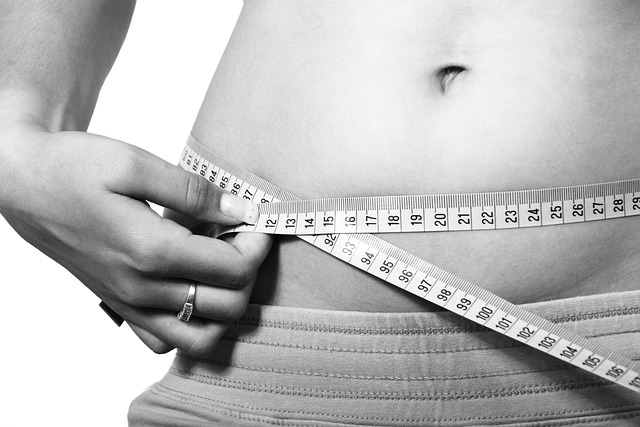Embarking on a quest for a trimmer waistline and healthier lifestyle, many have stumbled upon the shores of the Atkins Diet, a titan in the world of low-carbohydrate regimes.
Its recent resurgence isn’t just a wave but a sea change in the dieting landscape, catching the attention of weight loss enthusiasts and health-conscious individuals alike. This article isn’t just another map to hidden treasure; it’s your compass to navigating the Atkins Diet’s islands — Phases, Pros, and Cons.
We’ll dissect the allure of low-carb living and the potential treasures and traps it holds for our bodies and overall health. It’s not just about cutting the carbs; it’s about understanding the voyage your body embarks on with each phase and the metabolic metamorphosis that occurs.
So, let’s set sail on this gastronomic adventure, with a hearty pinch of knowledge and a dash of caution, as we delve deep into the Atkins Diet.
Understanding the Atkins Diet
Imagine your body as a finely-tuned sports car that usually runs on premium fuel—that’s carbohydrates in our dietary world. Now, what if you were to switch the fuel? Would the car chug along or zoom past the competition? That’s where the Atkins Diet comes into play, sparking a revolution in the world of weight management. With its low-carb mantra, it has not just entered the dietary lexicon but has also parked itself firmly in the bustling parking lot of popular weight loss regimens.
The Atkins Diet is akin to a four-act play, each phase setting the stage for the next, guiding the body through a transformative journey. It’s founded on the principle that by slashing carbs significantly, the body is nudged into a metabolic state known as ketosis. Here, the body, much like a resourceful scout, starts burning fat for fuel instead of relying on carbohydrates.
Now, let’s delve into the nitty-gritty of the Atkins Diet’s phases and their specific objectives. It’s a tightrope walk, balancing your body’s immediate energy needs with its long-term health.
- The first phase, the Induction Phase, is like the opening act, setting the metabolic stage for weight loss. Here, carbs are limited to a mere 20-25 grams a day, coaxing the body into ketosis.
- Followed by the Balancing Phase, it’s time to reintroduce some nutrient-rich carbs back into the mix, finding that sweet spot between continued weight loss and a more varied diet.
- The Pre-Maintenance Phase takes the reins next, easing the body into a more sustainable carb intake level, preparing it for the grand finale.
- Finally, the Maintenance Phase — this is where you take a bow, maintaining your weight loss triumph and living out your low-carb lifestyle.
It’s important to note that while embarking on this low-carb odyssey, the body’s metabolism shifts gears. By restricting carbohydrates, our bodies learn to look elsewhere for energy, leading to a potential symphony of changes, including weight loss and improved insulin sensitivity. However, this metabolic tune-up is not without its caveats.
Before diving fork-first into the Atkins Diet, it’s critical to have a chat with a healthcare professional. Think of them as your personal dietary pit crew, ensuring your body is in tip-top shape for the dietary race ahead. They can help you understand the nuances of your own metabolism and offer guidance to make the journey smoother and safer.
In the grand scheme of things, the Atkins Diet is more than just a fad. It’s a structured, phase-by-phase approach to not just losing weight, but also learning about your body’s responses to carbohydrates. Understanding this could be the key to unlocking a healthier and possibly slimmer you.
Pros of Cutting Carbs on the Atkins Diet
Gearing up for a dietary change is like setting sail on the high seas of nutrition; you need a sturdy ship, a map, and a clear understanding of the winds that will guide you to your destination. The Atkins Diet, much like a seasoned sailor, brings its own set of advantages when it comes to navigating the choppy waters of weight management and overall health. So let’s hoist the sails and explore the benefits that come with reducing your carbohydrate intake.
Say ‘Bon Voyage’ to excess weight as you embark on the Atkins journey—one that is markedly characterized by a lower carb intake. With the wind of weight loss at your back, this diet can help individuals to effectively shed pounds. The science is straightforward: by slashing carbs, your body seeks alternative energy sources, tapping into fat reserves and thereby promoting weight loss. You’re not just losing weight; you’re on an expedition to a leaner you.
But the perks extend beyond the scales. Imagine your blood sugar levels as a serene sea; the Atkins Diet aims to keep these waters calm and undisturbed. By limiting carbs, which are known to cause spikes in blood sugar, individuals may experience steadier levels, reducing the risk of riding the dangerous tides of insulin resistance. This is a prime advantage for those navigating the stormy conditions of type 2 diabetes or prediabetes.
Moreover, setting a course with Atkins is akin to finding a new equilibrium in your diet’s macronutrient content. It’s about balancing the scales between proteins, fats, and carbs. By cutting carbs, you’re naturally increasing your intake of proteins and fats—think of it as correcting an imbalanced ship. This newfound balance can lead to feelings of satiation and, importantly, can help avoid the siren call of unhealthy snacking.
As you can see, the voyage on the Atkins Diet brings a bounty of benefits:
- Encourages weight loss: Your body transforms into a fat-burning machine.
- Stabilizes blood sugar: Smooth sailing for blood sugar levels.
- Better macronutrient balance: A hearty plank of proteins and fats for improved satiety.
However, even the most seasoned sailors know that one must navigate with caution. While there are numerous pros to casting carbs aside, it’s vital to remember that not all fats and proteins are created equal. Choosing healthy sources is like picking the right crew for your voyage; opting for lean proteins, heart-healthy fats, and nutrient-dense foods ensures that your journey is both beneficial and sustainable.
In the spirit of maritime adventure, it’s clear that cutting carbs on the Atkins Diet can be a swiftly moving current towards better health, but it’s important to steer the ship wisely to avoid the undercurrents and maintain a prosperous voyage. Always remember: a consult with a healthcare professional is the compass that keeps your nutritional journey on the right course.

Cons of Cutting Carbs on the Atkins Diet
Embarking on the Atkins Diet can feel like setting sail on a sea of steak and cheese – an ocean where the waves of bread and pasta have seemingly vanished. Yet, this carbohydrate-deficient voyage isn’t all smooth sailing. In the quest for weight loss, we must navigate through potential choppy waters, the cons of cutting carbs on the Atkins Diet.
First and foremost, cutting carbs can lead to the dreaded “Atkins flu.” Your body, once a well-oiled machine running on glucose, suddenly sputters and stalls as it searches for a new fuel source. Fatigue, headaches, and a general feeling of being under the weather can befall a carb-cutting adventurer during the initial phase of the diet.
- Constipation is another common complaint. Dietary fiber, largely found in carb-rich foods like fruits, vegetables, and whole grains, takes a backseat on the Atkins Diet. Without sufficient fiber, the digestive tract can slow to a crawl, leading to discomfort and bloating.
- There’s also the potential for bad breath, as the body enters a state of ketosis. While this metabolic state is the holy grail for fat burning, it can leave your mouth tasting like you’ve been gnawing on a stick of butter.
Moreover, when bread is banished from the banquet, the risk of nutrient deficiencies might creep up. It’s akin to hosting a garden party but forgetting to invite the plant-based guests. Yes, you can supplement, but it’s always best to receive your nutrients from whole food sources.
Let’s not forget the importance of choosing healthy sources of fat and protein. While sizzling bacon and gobs of cream cheese might be on the menu, they should not be the stars of the show. Leaner cuts of meat, fish, avocados, and nuts should play the lead roles to ensure your heart isn’t crying out for a curtain call.
The specter of heart disease looms as well. Many fear that the increased fat intake associated with low-carb diets could send cholesterol levels soaring. However, the plot twist is that this isn’t always the case – some find their cholesterol improves. It’s a storyline that varies from person to person, highlighting the importance of personalized dietary advice from a healthcare provider.
In the grand narrative of the Atkins Diet, the cons can sometimes feel like the antagonists in an otherwise inspiring tale of transformation. Yet, by understanding these potential pitfalls and planning accordingly, dieters can navigate the low-carb labyrinth with their eyes wide open.
To be forewarned is to be forearmed. Remember, every diet is a journey, and even the Atkins Diet, with its siren call of rapid weight loss, requires a map to navigate around the potential downsides. A balanced approach, mindful eating, and a sprinkle of common sense can go a long way in ensuring the voyage is both successful and sustainable.
Phase 1: Induction Phase
Embarking on the Atkins Diet is akin to setting out on a bold voyage into the land of low-carb living. The induction phase is the maiden step of this journey, a diving board into the pool of weight loss, and it’s all about resetting your metabolic compass. This phase is designed to jump-start your body’s fat-burning engine by slashing carbs to the bare minimum and gorging on protein and fats instead. Sounds like a carnivore’s daydream, doesn’t it?
The objectives of the induction phase are clear as crystal: it aims to switch your body’s energy source from carbs to fats, thereby initiating rapid weight loss. You’ll be reducing your carbohydrate intake to a measly 20 grams per day – about the same amount found in a small banana. But fear not, your plate won’t look like a bare desert. Instead, it will be brimming with meats, cheeses, and leafy greens, laying the foundations for a transformed eating pattern.
- Recommended Foods and Meals: During the induction phase, your shopping list should be heavy on meats like beef, pork, and poultry, as well as a treasure trove of fish. Fill your basket with eggs, cheese, and a garden of vegetables that grow above ground, such as broccoli and spinach, since they’re low in carbs but high in fiber.
- Seafood lovers, rejoice! Fish and shellfish are your friends during this phase. Lettuce turns into your go-to bread substitute – think juicy burger patties wrapped in leafy greens. It’s like a green handshake between your favorite comfort foods and your new health goals.
However, this phase isn’t a leisurely stroll through the park – it’s more like a rigorous hike up Weight Loss Mountain. It comes with challenges, including cravings for carbs and adjusting to a new way of eating. So, here are some tips to keep you from calling it quits:
- Hydrate! Drink plenty of water to keep the hunger pangs at bay and help flush out toxins.
- Keep Snacks Handy: Have Atkins-friendly snacks within reach to combat the temptation of carb-heavy treats.
- Spice It Up: Get creative with herbs and spices to add variety to your meals – who said low-carb eating had to be bland?
Imagine the induction phase as your personal culinary boot camp, where discipline meets deliciousness. This initial stage is crucial to set the tone for your entire Atkins adventure. It’s like learning to dance – at first, you might step on a few toes, but with practice, you’ll be gliding across the dance floor, or in this case, towards a healthier, low-carb life.
Remember, walking hand-in-hand with your trusted ally – a healthcare professional – can help navigate any bumps on the road. They’ll make sure you’re not just losing pounds but also maintaining your overall health. It’s the kind of partnership that even Batman and Robin would envy.
With the right approach, the induction phase is more than just a diet phase; it’s the prologue to your personal health narrative, setting the stage for a transformative journey. So, strap on your apron, arm yourself with a fork, and let’s turn that fat into fiction.
Phase 2: Balancing Phase
Imagine stepping into a world where the scales of nutrition are in perfect harmony – welcome to the Balancing Phase of the Atkins Diet. As the name implies, this stage is all about finding equilibrium in your dietary routine. It’s akin to a tightrope walker delicately traversing the rope, where on one hand, you’ve got carbs, and on the other, the rest of your nutrient intake. This phase is crucial, as it sets the tone for sustainable weight management and long-term health.
During this stage, we see a shift from the stricter Induction Phase to a more flexible approach. The primary aim is to introduce a broader variety of foods while still progressing towards your weight loss goals. It’s like slowly opening the curtains to let in more sunlight; you’ll gradually reintroduce certain carbs back into your diet to see how your body reacts.
- Gradual Carb Increase: A meticulous reintroduction of carbs takes center stage. This isn’t a carb free-for-all; it’s a controlled and conscious effort to find your body’s Carb Balance, the sweet spot where you can enjoy a wider range of foods without impeding weight loss.
- Macronutrient Management: Here, you’ll play the role of a nutrient maestro, conducting an orchestra of fats, proteins, and carbs to create a harmonious symphony of nourishment.
- Food Choices: The Balancing Phase invites you to explore new culinary territories. You’ll acquaint yourself with nutrient-rich carbs like berries, nuts, and yogurt, broadening your palate and nourishing your body.
The key to mastering this phase is attentiveness. As you introduce more carbs, listen to your body’s feedback like a gardener tending to plants, observing growth and health, adjusting care as needed. If weight loss stalls, you might need to tweak your carb intake, trimming it down like overgrown hedges until you find that perfect aesthetic – or in this case, the right balance.
Tips for a seamless transition through the Balancing Phase often include:
- Keeping a detailed food diary to monitor reactions to increased carb intake.
- Staying vigilant about portion sizes – just because some carbs are back on the menu doesn’t mean they should overshadow the plate.
- Focusing on high-fiber, low-glycemic index foods that offer satiety and stabilize blood sugar levels.
- Continually educating oneself on the nutritional value of foods to make informed choices as more options become available.
In essence, the Balancing Phase is a period of exploration and adjustment. It’s where you learn to manage carbs effectively and ensure that every bite counts towards a healthier, more vibrant you. Successfully navigating this phase paves the way for the next stages of Atkins, where those newfound eating habits become second nature, and you can maintain your weight loss triumphs with grace and ease.
Phase 3: Pre-Maintenance Phase
Embarking on the Pre-Maintenance Phase of the Atkins Diet is like gently tapping the brakes after a full-throttle race towards weight loss. This critical transition phase is not about abrupt changes but rather about fine-tuning your diet to ensure long-term success. Ah, the art of balance—it’s like walking a dietary tightrope with carbs in one hand and proteins in the other, all while keeping your eyes on the ultimate prize: a sustainable and healthy lifestyle.
By now, you’ve likely waved goodbye to a significant amount of weight during the Induction and Balancing phases. Kudos to you! But as the name implies, Pre-Maintenance is about preparing your body to maintain that new svelte figure. The main goal here is to gradually increase carbohydrate intake, while monitoring the scale to ensure weight loss is slowing down, but not reversing. It’s a delicate ballet where you pirouette around carbs to find just the right amount that your body can tolerate without tipping the scales—literally.
- Slowly introduce more carbs into your diet, increasing by about 10 grams of Net Carbs per week.
- Keep a vigilant eye on weight changes; the right carb balance is when weight loss tapers to about a pound a week.
- Experiment with new foods to broaden the culinary horizon while still keeping carb levels in check.
- Continue to listen to your body; if you notice any negative reactions or weight gain, adjust your carb intake accordingly.
During the Pre-Maintenance Phase, your body becomes the ultimate guide. It’s a time for nutritional introspection, where you’ll discover your personal carbohydrate tolerance level. This carb comfort zone is your sweet spot, where you can enjoy a variety of foods without undoing your hard-earned progress. Think of it as a dietary “choose your own adventure”—with each choice carefully made to keep your body humming along happily.
Now, what’s a good story without a few plot twists? Expect this chapter of your dietary journey to teach you a thing or two about patience and adaptability. As you reintroduce different foods, here are some tips to keep you on the straight and narrow:
- Continue to focus on whole, unprocessed foods to maximize nutrient density.
- Monitor your body’s response closely; not all carbs are created equal, and some may trigger cravings or weight gain.
- Keep refining your diet based on your body’s feedback, and don’t be afraid to take one step back to take two steps forward.
As you tiptoe closer to the ultimate Maintenance Phase, the Pre-Maintenance stage polishes your understanding of your body’s unique needs. It’s a trial run for the lifelong marathon of healthy eating, setting you up with the pace and resilience needed to cross the finish line into a life of balance and well-being. So, lace up your sneakers, and let’s get ready to run this leg of the race with gusto!
Phase 4: Maintenance Phase
Imagine cresting the hill of your weight loss journey, the wind of your hard work at your back, and the vast horizon of balanced eating stretching before you. Welcome to the Maintenance Phase, the fourth and final chapter of the Atkins Diet. This is where you take the reins, applying the principles you’ve learned to steer your eating habits towards a sustainable future.
In this phase, it’s not about the steep drop of carb cutting anymore; it’s about finding your equilibrium. The objectives are simple yet significant: maintain your weight loss, keep a harmonious relationship with your dinner plate, and enjoy a variety of foods without the fear of backsliding. It’s your dietary ‘happily ever after’ if you will.
Approach to Long-Term Balance
So how do you go about this? The maintenance phase is not a one-size-fits-all deal. It’s tailored to your individual needs, giving you the flexibility to experiment with different levels of carbohydrate intake to find what works best for your body. Here’s the game plan:
- Identify Your Carbohydrate Equilibrium: Gradually increase your carb intake, paying close attention to your body’s response. If the scale starts to creep up, you’ve found your threshold.
- Diversify Your Nutrition: Introduce a broader variety of fruits, vegetables, and whole grains to keep your meals interesting and nutritionally rich.
- Listen to Your Body: Hunger and cravings can be navigational tools. Use them to adjust your food choices and portions.
As you embark on this phase, remember, the journey of a thousand meals begins with a single bite. Take it one step at a time, and don’t be afraid to adjust as you go.
Challenges and Triumphs
Navigating the Maintenance Phase can be like walking a tightrope. Balance is key, and sometimes you might wobble. Here are a few challenges you might encounter:
- Complacency: After the initial weight loss, it’s easy to slip back into old habits. Keep your goals in sight, and stay vigilant.
- Overindulgence: With more freedom comes more responsibility. Indulging too often can tip the scales in the wrong direction.
- Plateau Frustration: Your weight might plateau even if you’re doing everything right. Patience is your ally here.
To counter these challenges, here are a few tips:
- Keep a Food Diary: Tracking your intake can help you stay aware of your eating patterns.
- Stay Active: Regular exercise can help maintain weight loss and improve your overall health.
- Build a Support System: Whether it’s friends, family, or an online community, surround yourself with those who cheer you on.
Ultimately, the Maintenance Phase is not just about maintaining weight; it’s about maintaining a lifestyle. It’s the crescendo of your hard work, where you harmonize the melody of mindful eating with the rhythm of a balanced life. Embrace the journey, for you’ve earned every step.



